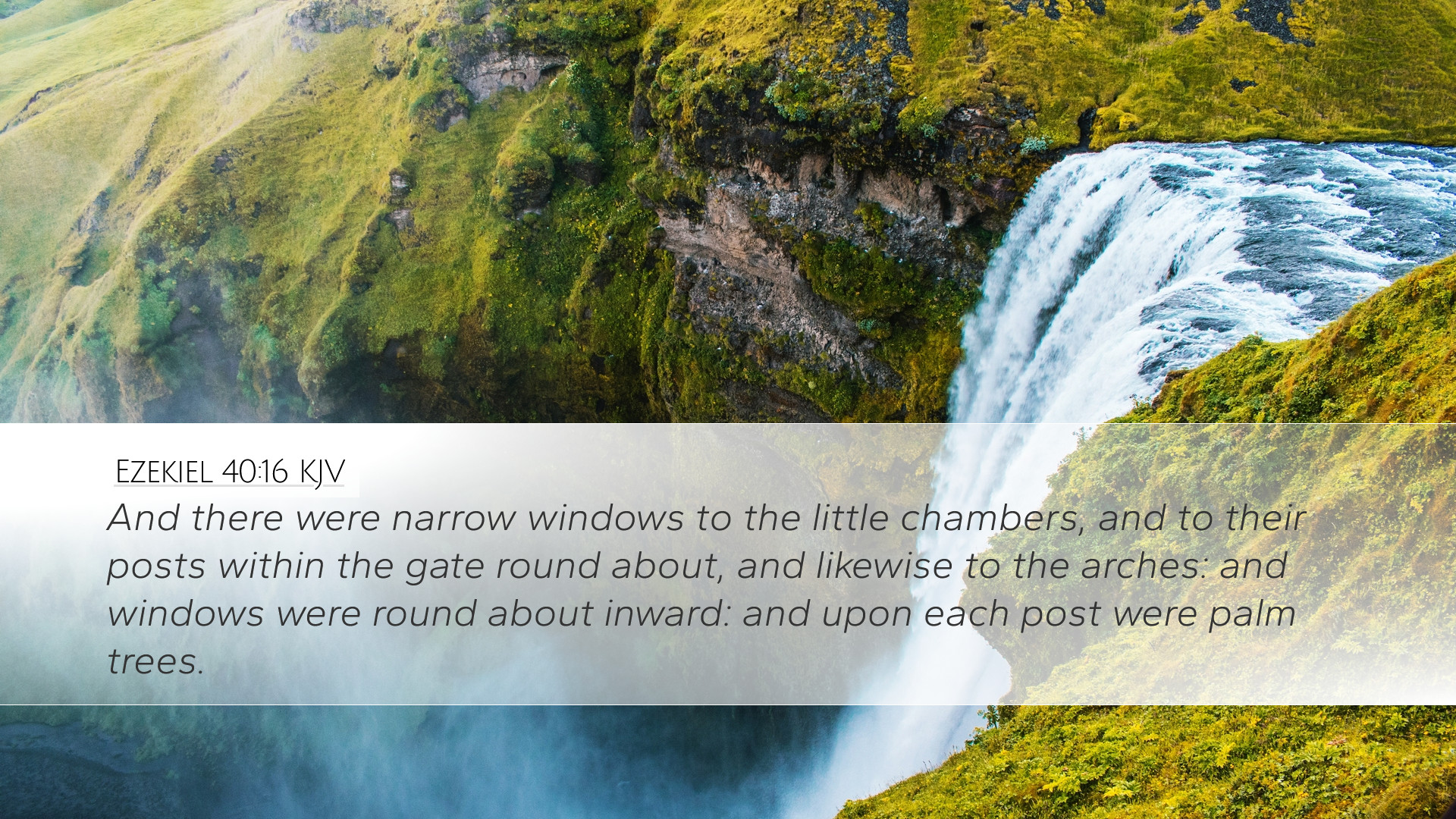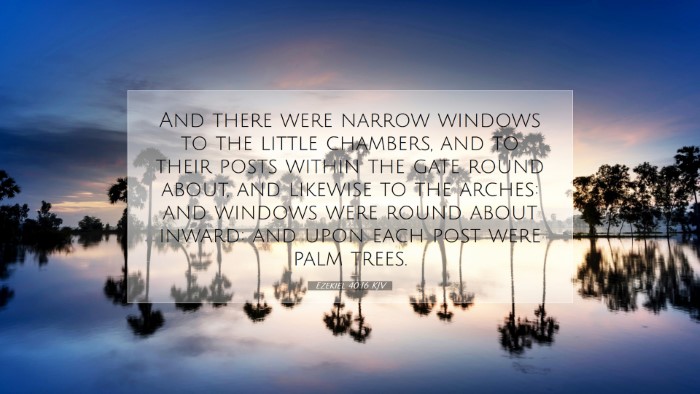Ezekiel 40:16 - Commentary Summary
Ezekiel 40:16 states: "And the little chambers thereof were three in a row, and the little chambers had one door to the north, and another door to the south: and the breadth of the little chambers was five cubits round about." This verse belongs to a larger vision that Ezekiel received about the future temple and its detailed architecture. The intricate descriptions found within this chapter yield profound theological insights.
Contextual Framework
To fully appreciate this verse, it is crucial to understand the context in which Ezekiel prophesied. The destruction of Jerusalem and the subsequent exile had left the Israelites in despair. In this vision, God reveals His plans for restoration and a new temple which symbolizes His presence among His people once again.
The Importance of the Temple
The future temple described in Ezekiel symbolizes the divine order and the presence of God. It is a representation of the renewed relationship between God and Israel. The temple is not merely a physical structure; it reflects a spiritual reality where God will dwell with His people, reinforcing their identity as His chosen people.
Architectural Specificity
Matthew Henry provides a detailed examination of the architectural features mentioned in this verse. The description of the little chambers, their arrangement, and the designated entrances teaches us about God's attention to detail in His plans. Such structured organization indicates divine authority and the precision with which God operates.
Symbolism of the Chambers
Albert Barnes expounds on the significance of the number three, noting its frequent biblical implications regarding completeness and divine perfection. The arrangement of chambers in rows correlates with the perfect order established in God's creation and ongoing governance. The entrances to the north and south further exemplify the inclusiveness of God’s reach, as people from all directions are called to enter into His presence.
Theological Reflections
This passage invites scholars and theologians to reflect on various theological implications:
- God’s Restoration: The meticulous details provided in Ezekiel's vision inspire hope in God's restorative plans amidst despair.
- The Presence of God: The architecture symbolizes God’s intent to dwell among His people, emphasizing His desire for intimate fellowship.
- Divine Order: The specific arrangement of chambers illustrates the systematic and orderly nature of God's creation and His governance.
- Inclusivity: The designated chambers with doors to different directions symbolize God’s openness and willingness to accept all who seek Him.
Implications for Pastoral Ministry
This verse is integral for pastoral teachings, as it provides a rich source for sermons on God’s promise of presence and restoration. Pastors should emphasize that the vision of the temple is a promise not only for the Israelites but for all believers. The details encourage congregations to understand their identity as the temple of the Holy Spirit, a theme elaborated in the New Testament.
Conclusion
In summary, Ezekiel 40:16 serves as a reminder of God's profound care for His people and His meticulous plans for their future. As believers dwell on this passage, they are drawn into a deeper understanding of God’s nature, His designs, and the great hope that lies in the promise of His enduring presence.
Final Thoughts
For theologians and scholars, this verse and its analysis open avenues for deeper investigation into the intersections of Old Testament prophecy and New Testament fulfillment. It highlights the continuity of God’s redemptive narrative throughout scripture.


